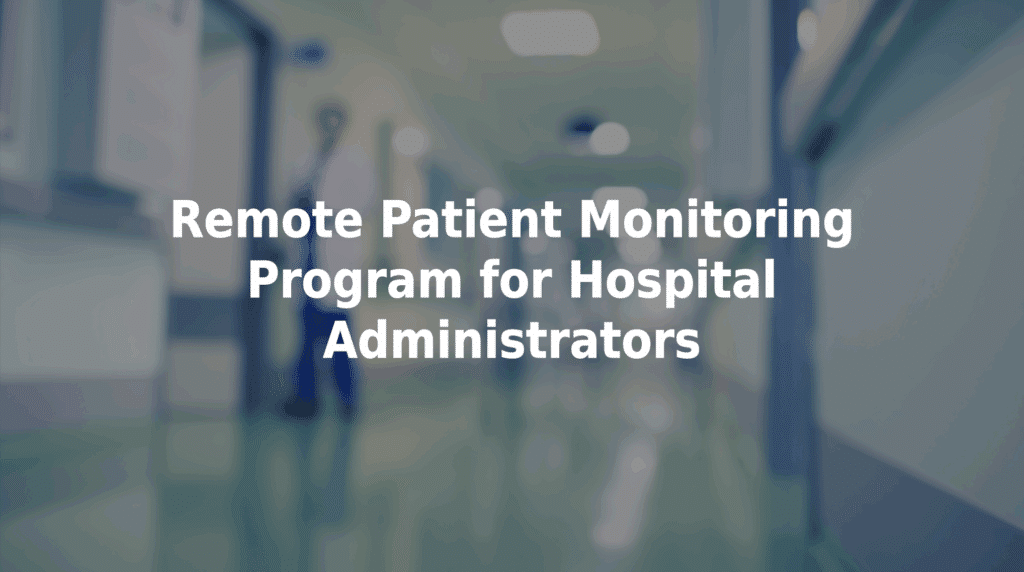Remote Patient Monitoring Program for Hospital Administrators
Hospitals are under increasing pressure to reduce readmissions, improve patient outcomes, and optimize operational efficiency — all while navigating staffing shortages and shifting reimbursement models. A well-designed remote patient monitoring program for hospital administrators offers a scalable solution to these challenges. TriageLogic’s RPM platform enables continuous patient oversight after discharge, delivering real-time insights, nurse triage support, and measurable improvements in clinical performance and cost savings.
Why RPM Is a Strategic Priority for Hospitals
Remote ratient monitoring has gone from a “nice-to-have” feature to a strategic imperative for modern hospitals. Traditional follow-up care often leaves critical gaps between discharge and recovery, leading to preventable readmissions and higher costs.
By integrating RPM, hospital administrators can:
- Extend care beyond the hospital setting.
- Proactively manage high-risk populations.
- Catch early signs of health deterioration.
- Reduce reliance on emergency visits and readmissions.
Key Features of TriageLogic’s RPM Program
TriageLogic’s RPM platform is uniquely designed to support hospitals with a combination of advanced technology and human clinical oversight. Our full-service program includes:
- HIPAA-compliant devices like blood pressure cuffs, pulse oximeters, and glucose monitors.
- 24/7 nurse triage to review abnormal readings and contact patients in real time.
- Customizable care protocols tailored to chronic conditions and post-acute care needs.
- Secure EHR integration to streamline workflows and documentation.
- Patient onboarding and education to boost adherence and engagement.
Benefits for Hospital Administrators
TriageLogic’s RPM solution helps hospital leaders address some of their most pressing challenges:
- Lower Readmission Rates. Proactive monitoring and real-time intervention help prevent avoidable ER visits and hospital readmissions, especially for chronic disease patients.
- Stronger Patient Engagement. Daily monitoring and nurse outreach make patients feel more connected to their care team, leading to higher satisfaction scores and adherence.
- Operational Relief. By outsourcing alert triage and patient communication, hospital staff can focus on acute care needs, reducing burnout and improving efficiency.
- Alignment With Value-Based Goals. Hospitals can improve HEDIS and CMS quality metrics, unlock shared savings, and meet the requirements of ACOs and bundled payment programs.
Best Practices for Hospital-Run RPM Programs
To ensure success, hospital administrators should follow these key steps.
- Target high-risk populations such as those with CHF, COPD, or diabetes, or who have recently undergone surgery.
- Establish triage protocols and clinical thresholds that align with your care goals.
- Engage patients at discharge with training and support for device usage.
- Track and report outcomes to demonstrate ROI and meet quality benchmarks.
TriageLogic provides full support at each stage — from program design and training to patient engagement and performance analytics.
Take the Lead in Modern Patient Care
As the healthcare landscape evolves, hospital administrators need tools that reduce risk, support clinical teams, and drive measurable outcomes. TriageLogic’s remote patient monitoring program provides a turnkey solution that helps you deliver better care — anytime, anywhere.
Contact us today to learn more!

